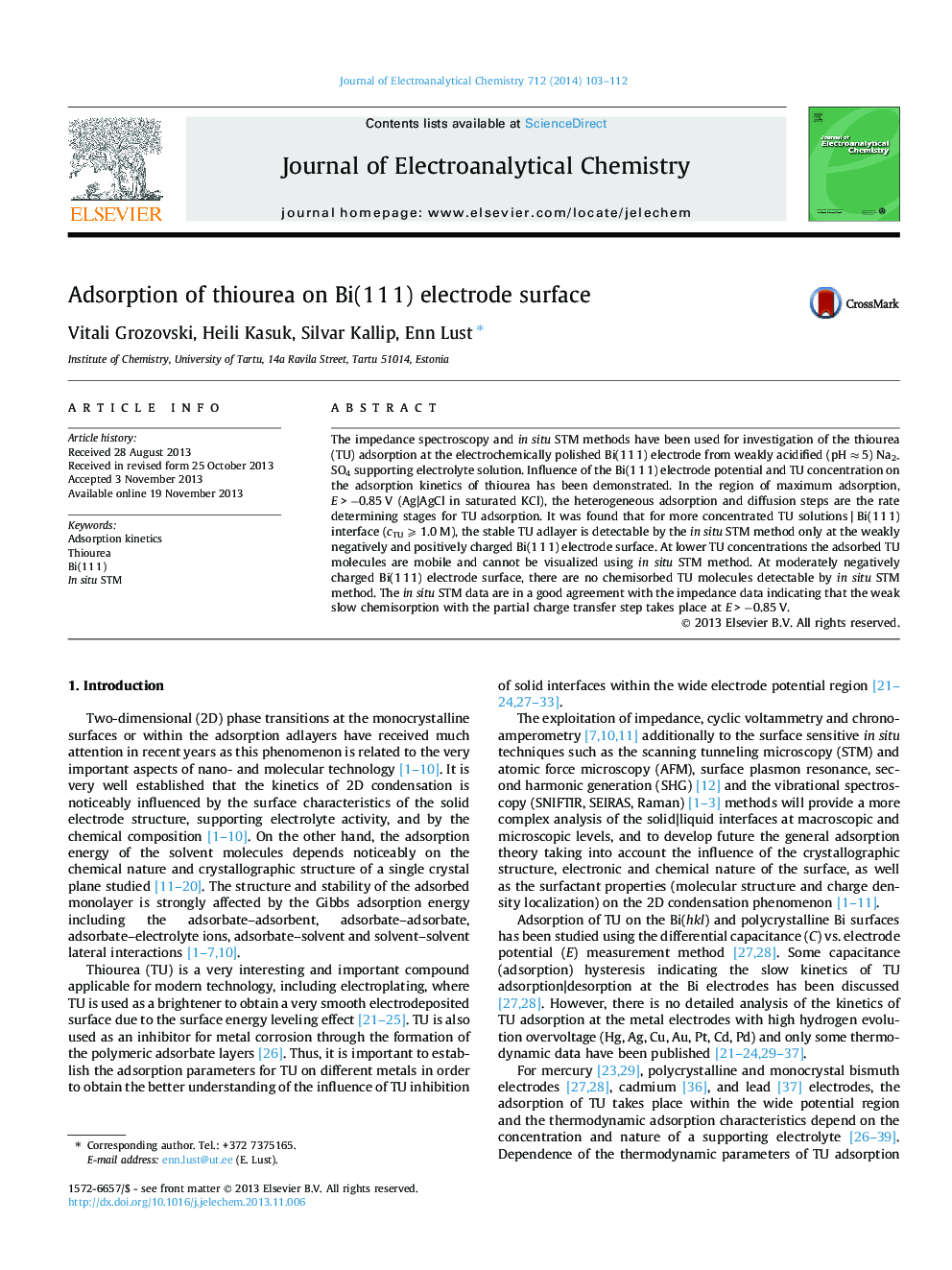| Article ID | Journal | Published Year | Pages | File Type |
|---|---|---|---|---|
| 6662752 | Journal of Electroanalytical Chemistry | 2014 | 10 Pages |
Abstract
The impedance spectroscopy and in situ STM methods have been used for investigation of the thiourea (TU) adsorption at the electrochemically polished Bi(1 1 1) electrode from weakly acidified (pH â 5) Na2SO4 supporting electrolyte solution. Influence of the Bi(1 1 1) electrode potential and TU concentration on the adsorption kinetics of thiourea has been demonstrated. In the region of maximum adsorption, E > â0.85 V (Ag|AgCl in saturated KCl), the heterogeneous adsorption and diffusion steps are the rate determining stages for TU adsorption. It was found that for more concentrated TU solutions | Bi(1 1 1) interface (cTU ⩾ 1.0 M), the stable TU adlayer is detectable by the in situ STM method only at the weakly negatively and positively charged Bi(1 1 1) electrode surface. At lower TU concentrations the adsorbed TU molecules are mobile and cannot be visualized using in situ STM method. At moderately negatively charged Bi(1 1 1) electrode surface, there are no chemisorbed TU molecules detectable by in situ STM method. The in situ STM data are in a good agreement with the impedance data indicating that the weak slow chemisorption with the partial charge transfer step takes place at E > â0.85 V.
Related Topics
Physical Sciences and Engineering
Chemical Engineering
Chemical Engineering (General)
Authors
Vitali Grozovski, Heili Kasuk, Silvar Kallip, Enn Lust,
